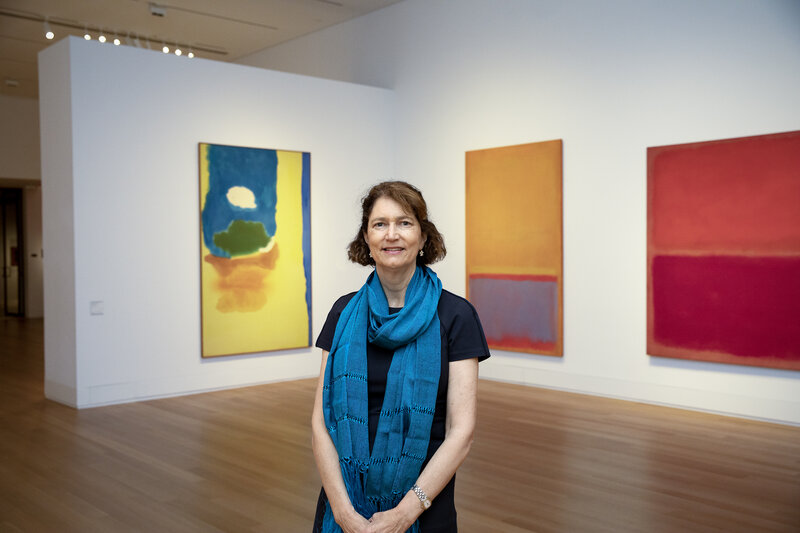Stephanie Wiles, who has increased access to the Yale University Art Gallery’s collections and expanded partnerships, will serve a second term as director.
Stephanie Wiles, who has expertly led the Yale University Art Gallery for the past five years, has been reappointed to a second term as the Henry J. Heinz II Director, Yale President Peter Salovey announced today.
During her first term as director, Wiles spearheaded the Gallery’s reaccreditation process from the American Alliance of Museums (AAM), awarded in June 2021, a distinction that demonstrates that the Gallery meets the highest standards in stewarding collections, policy and governance practices, and finances.
As part of the reaccreditation process, Wiles engaged the staff in articulating a five-year strategic plan, “New Voices, New Perspectives,” which established a road map for campus and community partnerships, a comprehensive digital strategy, a forward-looking commitment to provenance research, and innovative approaches to collection building and display.
“Stephanie Wiles has done an exceptional job at the helm of the Yale University Art Gallery, one of Yale’s finest treasures,” said Salovey. “Her clear-sighted leadership, commitment to expanding access to art, and passion for facilitating collaborations have ensured that the Gallery’s superb collections continue to grow and enrich teaching, research, and scholarship on campus.
“Through her singular vision, Stephanie has elevated the Gallery’s profile nationally and internationally with dynamic exhibitions and innovative programs.”
The Gallery has introduced new digital projects to ensure that its collections and scholarship increasingly engage a wider audience, including the launch of a redesigned, mobile-friendly website, an out-of-print digitization project, and a digital publication program for collection catalogues. Active participation in LUX: Yale Collections Discovery, a multiyear, cross-collection venture to create a single, web-based collection platform, will enable visitors from around the world to explore Yale’s cultural heritage collections.
Wiles has also continued to expand physical access to the Gallery’s extraordinary works of art to enhance teaching and research with a rehousing of about 20,000 artworks. This $28 million project will create 40,000 square feet of new, shared collection storage at the West Campus Collection Studies Center, including a state-of-the-art painting storage room and a newly constructed 3-D storage annex.
Under Wiles’s leadership, the Gallery has reaffirmed its commitment to mentoring the next generation of museum professionals. Galvanizing support from its many donors, Wiles has ensured investments are being made in pre-program and post-graduate conservation fellows, a new student engagement position in the Gallery’s education department, and the establishment of a diversity apprenticeship program in partnership with the New Haven Hiring Initiative. The Gallery continues to strengthen its legacy of teaching and learning with new scholarly opportunities for students from Yale and other colleges and universities.
As an on-campus collaborator, Wiles has solidified the Yale University Art Gallery’s position as the nexus of cross-collections partnerships, said Susan Gibbons, vice provost for collections and scholarly communication at Yale, notably in the development of two exhibitions currently on view: In a New Light, which features more than 50 paintings from the Yale Center of British Art; and Crafting Worldviews: Art and Science in Europe, 1500–1800, which brings together objects of art and instruments of science from the Yale University Art Gallery, the Yale Peabody Museum, the Yale Center for British Art, and the University Libraries.
Wiles masterfully guided the Gallery through the challenges associated with the COVID-19 pandemic, overseeing the development of a hybrid model for in-person and virtual events and programs, the full reopening of the museum in 2022, and the safe return of all staff to their respective spaces downtown and at West Campus, Gibbons said.
